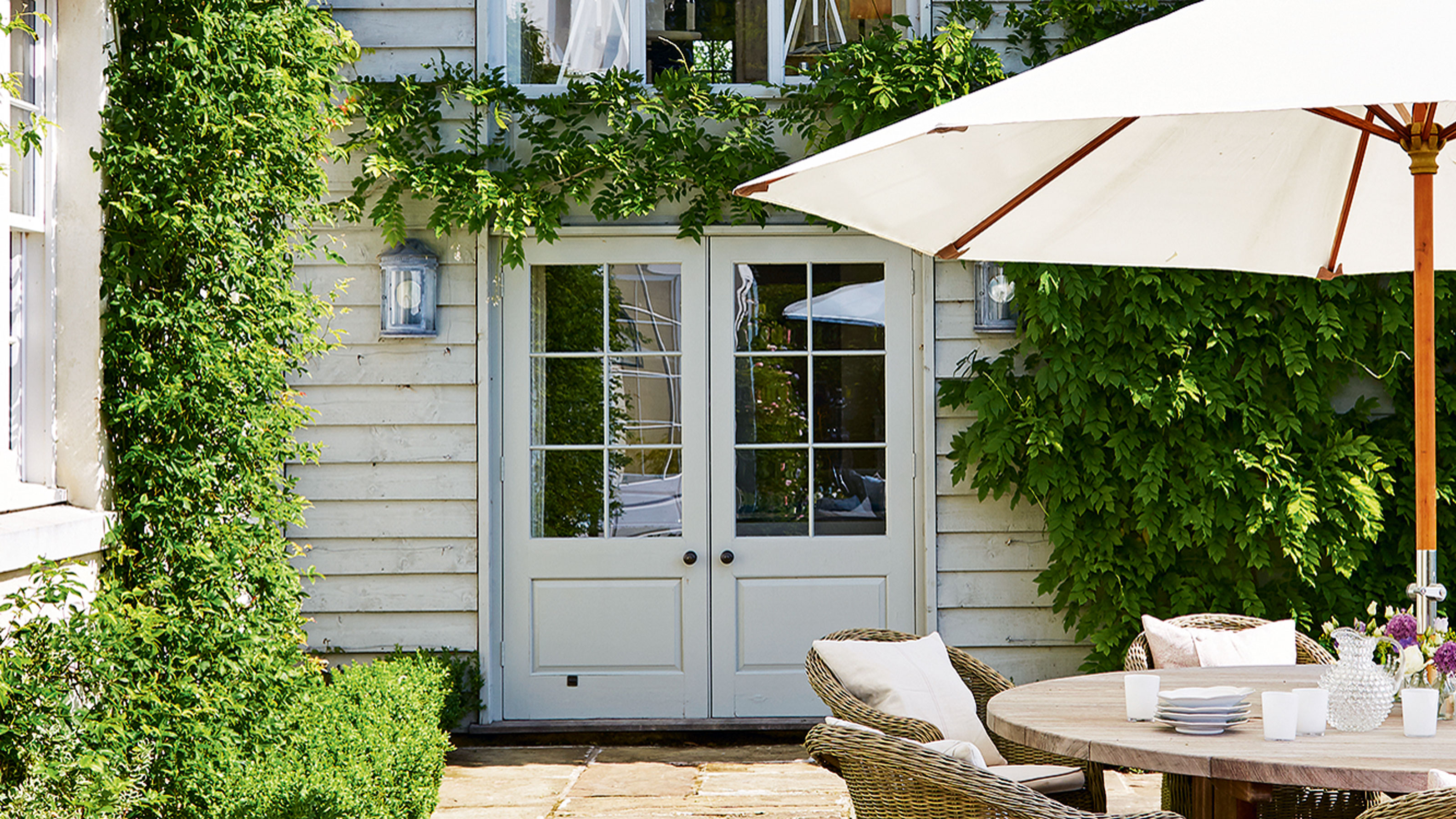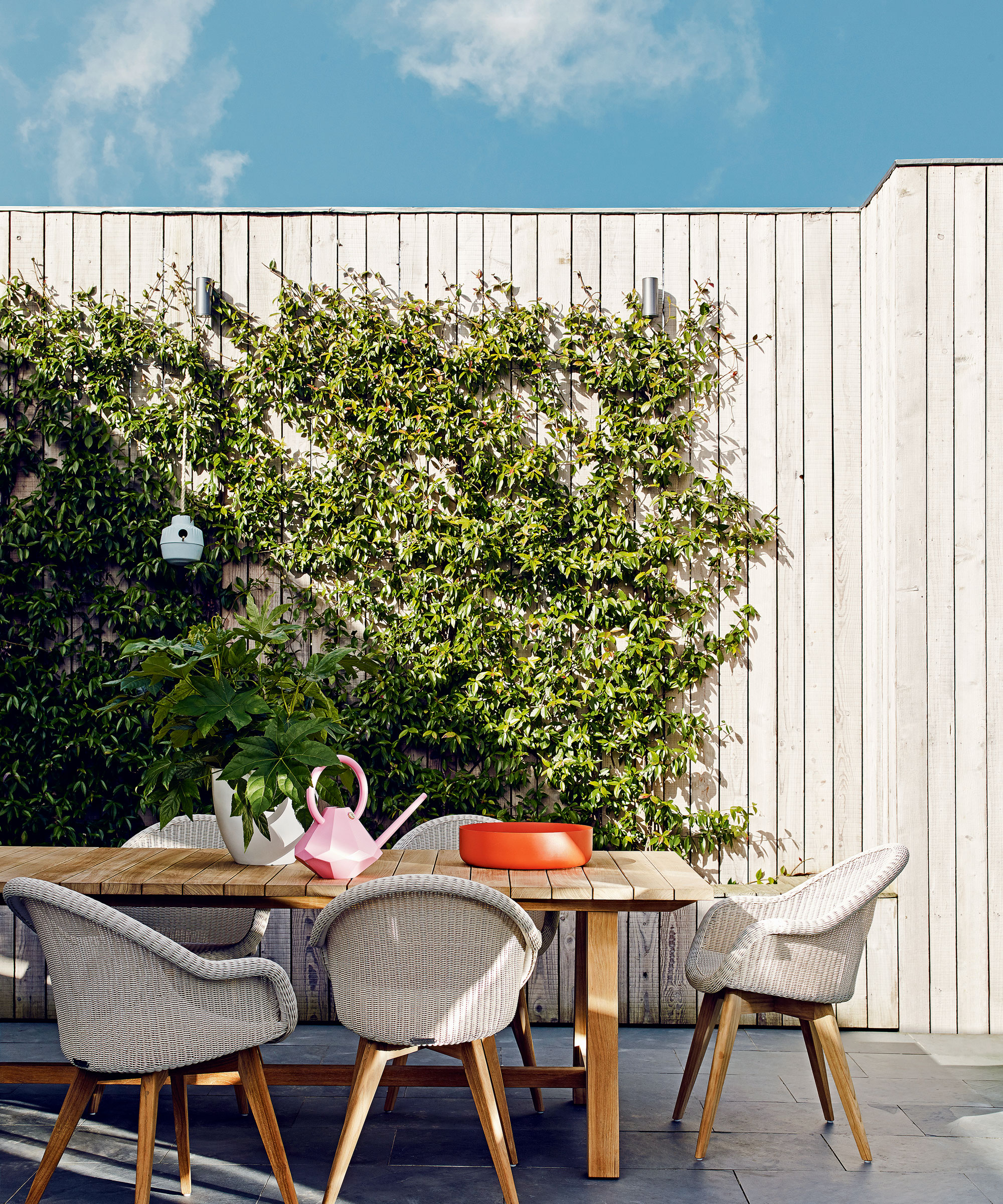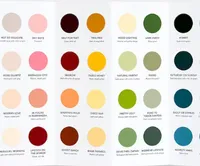Can you use interior paint outside? Paint professionals give their expert verdict
Will freshening up outdoor spaces with indoor paint create more headaches than it's worth?


If you have paint leftover from redecorating your interiors it can be very tempting to take it outside and give outdoor walls, furniture, and fencing a quick refresh too – especially when you think about how much paint ends up in landfills.
So, can you use interior paint outside or is it a DIY and decorating faux pas? Paint professionals say that while it's possible to use it to paint a house exterior, it's a shortcut not worth making.
It's not what interior paint is designed to do – because of the differences in the formulation of interior and exterior paints, it will likely need repainting much more quickly than if you used the right paint for the job.
Can you use interior paint outside?
'No, interior paints are formulated differently than exterior paints. Interior paint won't hold up to the elements from the outdoors,' asserts contractor Jay Sanders of Castle Dream Basement Waterproofing, a home remodeling company in Baltimore.
Still thinking of winging it? Here is what the paint pros suggest, and what to do if you have accidentally covered a garden wall with indoor paint.

Pros
While it is generally not recommended, paint expert Ray Brosnan says there are a few instances where using interior paint on exterior surfaces may be feasible. First, it could be a cost-effective, short-term fix: repurposing leftover interior paint for small, low-impact outdoor projects can help save money if you're on a tight budget.
Plus, it might do the job in areas that are fairly sheltered, like a pergola or summer house. 'In cases where the surface is sheltered from direct sunlight and protected from extreme weather conditions, interior paint may offer temporary coverage,' Ray shares.
Design expertise in your inbox – from inspiring decorating ideas and beautiful celebrity homes to practical gardening advice and shopping round-ups.
Cons
As with the question of using exterior paint indoors, using interior paint in an open air environment has a few drawbacks.
Interior paint is designed to resist abrasion, stains, and fingerprints (and the best types of paints for kitchens are designed to be easy to clean). But because it doesn't have the same heavy-duty chemicals of external paints, such as mildewcide, it will not hold up well against the elements. As a result, it's likely to crack, fade, blister, and peel fairly quickly, ultimately making our garden wall paint ideas look shabby rather than chic.
It's also less able to withstand UV rays from the sun and temperature fluctuations than external paint, which is more flexible and able to accommodate the expansion and contraction of outdoor surfaces through the changing of the seasons. What's more, it might not adhere to outdoor surfaces particularly well either. Indoor paint may also be too thin and too porous, potentially taking a long time to dry outdoors.
'If you have an outdoor painting project, it's generally best to choose a high-quality exterior paint that can withstand the specific conditions it will be exposed to,' agrees Andre Kazimierski, CEO, Improovy Painters St Louis.

Andre Kazimierski founded Improovy in 2019 and has developed it into a leading home improvement service. It is his mission to make painting more efficient for all of his clients and uses generations of expertise to inform his work.
Backdrop color card | $6 at Backdrop Home
Explore the shades of Backdrop's color palette to inspire upcoming renovation projects indoors and out.

FAQs
Is there anything you can do to make interior paint last outside?
'You can prime, paint, and seal interior paint, but when put outdoors it will still peel, chip, and crack when exposed to the elements,' says contractor Jay Sanders. Reduce how often you need to paint a house exterior by preparing thoroughly and using high-quality external paint.
Can you use emulsion outside?
'Emulsion and latex paint is primarily designed for indoor use and may not be suitable for long-term outdoor applications,' says John at PaintAnalyzer. 'It begins to show signs of wear and deterioration within a few months to a year.'
What to do if you used interior paint outside accidentally?
Interior paint outdoors will likely need repainting after a year or two, depending on how exposed the area is. Consider sealing it with a weather-resistant sealer or waterproof paint, at Walmart, to help it withstand the elements.
We wouldn't take our indoor furniture outside, and the same applies to paint. We think that if a job is worth doing, it is worth doing properly, so save interior paint for indoor spaces.
From painting shelves and display cabinets in a dark, dramatic tone to giving door frames and trim a colorful makeover, there are plenty of DIY ideas to use up leftover paint inside.

Millie is a freelance writer and qualified interior designer based in Sheffield. She has many years of experience in the world of content and marketing, and previously worked as the head of Solved at Homes & Gardens. Before that, she worked in SEO at News UK in London and New York. She has a first-class degree in French and Italian from UCL and loves to weave decor into her home that reminds her of time spent living and studying in Bologna. Millie believes a clutter-free space that you love coming home every day is the best secret weapon for our well-being.
